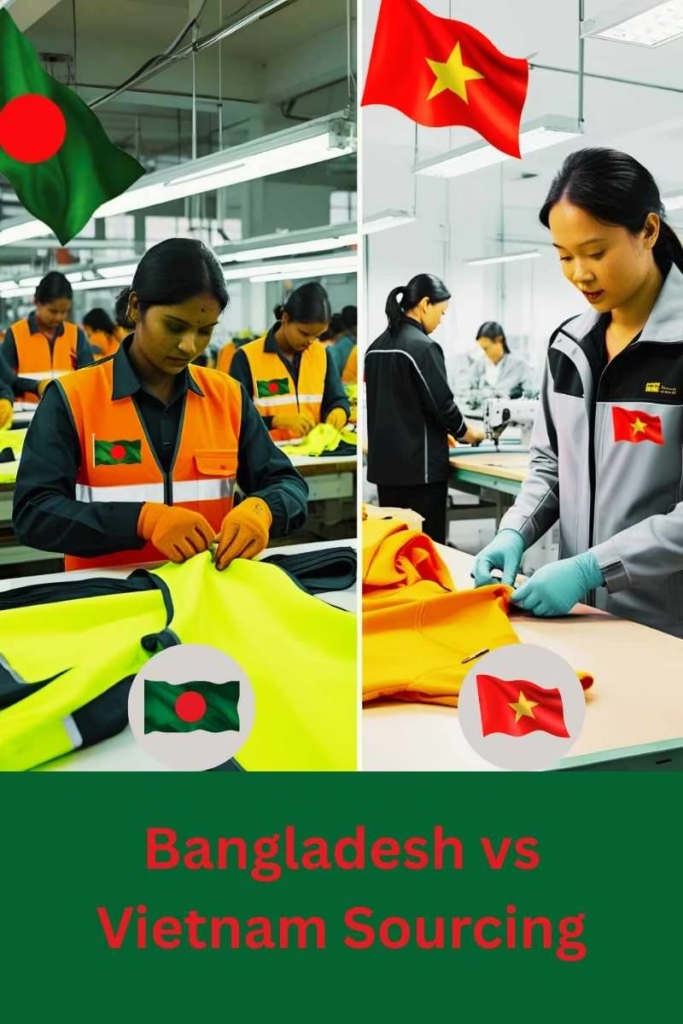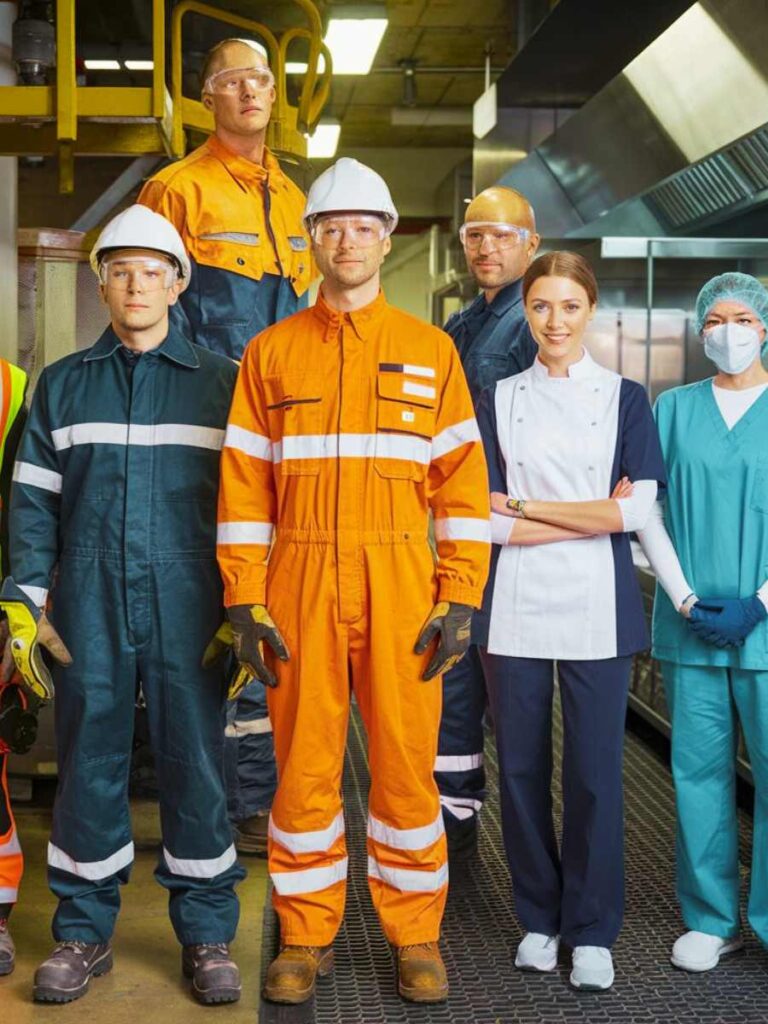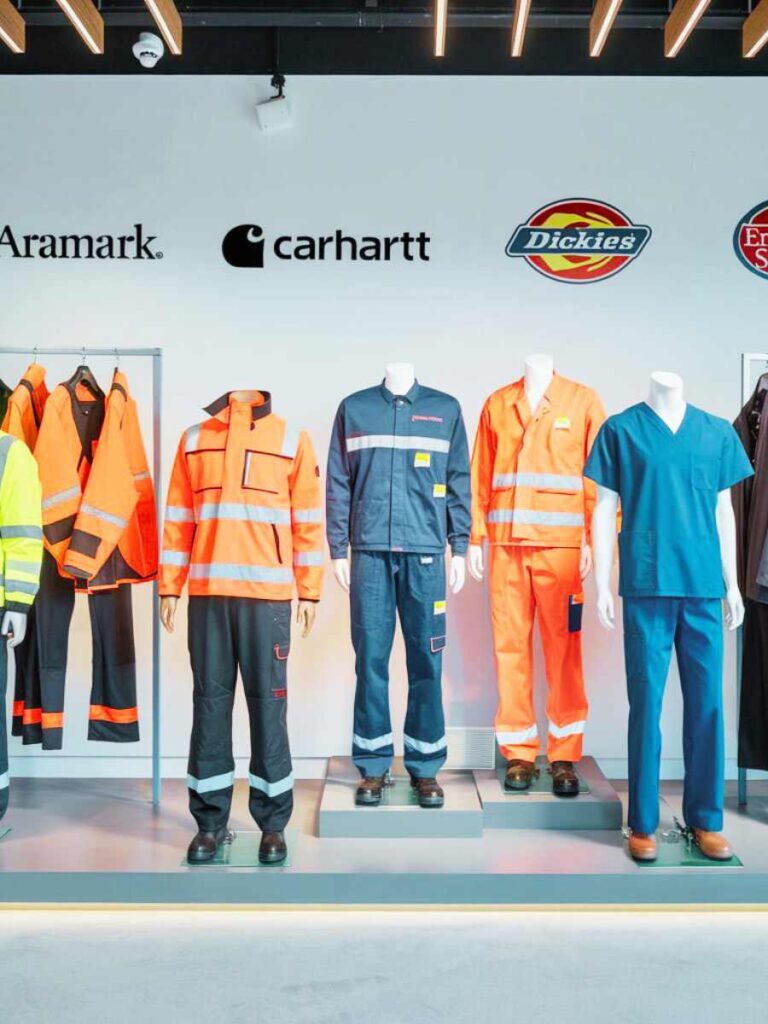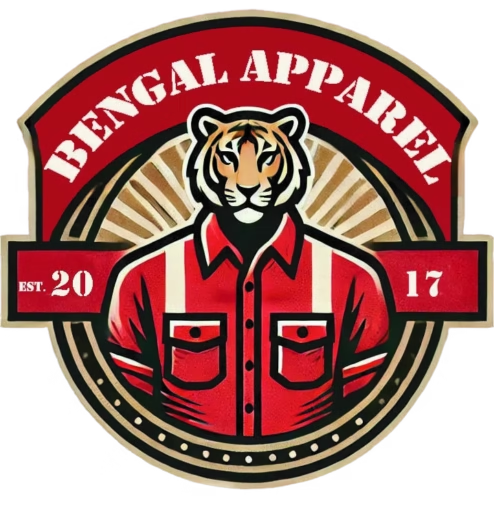When it comes to sourcing high-quality, affordable, and sustainable workwear, two countries stand out: Vietnam and Bangladesh. Both are global leaders in garment manufacturing and have built strong reputations among international buyers. But when you’re a business looking to import uniforms, industrial wear, or high-visibility clothing, how do you choose between them?
In this article, we break down the full picture of Vietnam vs Bangladesh Workwear Manufacturing—analyzing quality, compliance, labor practices, production costs, and future growth. Whether you’re a sourcing manager, apparel brand, or B2B uniform supplier, this guide will help you decide which country best fits your workwear sourcing strategy.
1. Overview of Vietnam and Bangladesh in the Global Workwear Market
Bangladesh: The Cost-Efficient Powerhouse
Bangladesh is currently the second-largest exporter of garments in the world. Known for mass production capacity, cost-effective labor, and factory specialization in denim, twill, polyester-cotton blends, and high-visibility workwear, Bangladesh has emerged as a go-to destination for B2B uniform buyers.
Notably, Bangladesh is also home to some of the world’s greenest garment factories, making strides in sustainable manufacturing with certifications like LEED, OEKO-TEX, BSCI, and WRAP.
Vietnam: The Technical Garment Specialist
Vietnam has built a strong reputation for producing technical apparel, including performance outerwear, flame-resistant uniforms, and multi-layered garments. Its manufacturing model relies heavily on foreign direct investment (FDI) and vertically integrated factories that combine design, fabric development, and sewing in one streamlined system.
Although it is generally higher in cost, Vietnam is well-regarded for its quality control, skilled labor, and efficient shipping infrastructure.
Bangladesh
Factories in Bangladesh have long mastered heavy-duty fabrics, including canvas, ripstop, poly-cotton blends, and breathable meshes used in construction and warehouse workwear. The majority of raw materials are sourced from within Asia, keeping costs competitive. Local mills are increasingly capable of in-house dyeing, testing, and compliance with EN ISO and ANSI standards.
Strengths:
Competitive pricing on core workwear fabrics
Large variety of functional textiles (hi-vis, durable knits)
Growing capabilities in moisture-wicking and flame-resistant fabrics
Vietnam
Vietnam tends to source more premium materials from Japan, South Korea, and Taiwan. As a result, factories offer technically superior fabrics, ideal for outdoor uniforms, protective gear, and multilayered products.
Strengths:
Greater use of advanced technical fabrics
High standards in fabric innovation and testing
Better suited for high-performance workwear and outerwear
Verdict:
If you’re sourcing standard to mid-range workwear, Bangladesh offers the best value. Vietnam might be worth the extra money for high-end technical clothing.
3. Workwear Production Costs
| Garment Type | Bangladesh (FOB) | Vietnam (FOB) |
|---|---|---|
| Work Shirt (Cotton) | $6–$8 | $8–$11 |
| Safety Vest (Hi-Vis) | $2.50–$4.00 | $3.50–$5.00 |
| Coverall (Poly-cotton) | $10–$14 | $12–$16 |
| FR Jacket | $18–$25 | $22–$30 |
Why Bangladesh is Cheaper:
Lower labor costs
Duty-free access to the EU and other regions under GSP
Competitive utility and infrastructure expenses
Verdict:
If budget is a key driver in your decision, Bangladesh wins with significantly lower FOB prices for similar quality levels.
4. Compliance, Certifications & Labor Standards
Bangladesh
Bangladesh has dramatically improved its compliance standards post-2013. Leading factories now maintain certifications like:
WRAP
BSCI
OEKO-TEX
GOTS (for organic production)
ISO 9001, 14001
ACCORD/RSC safety standards
The country also leads in LEED-certified green factories, with over 180 facilities meeting global environmental benchmarks.
Vietnam
Vietnam also maintains high compliance levels, with most medium to large factories certified under ISO, WRAP, or Sedex. Labor laws are strictly enforced and the country has a stable political climate that supports manufacturing growth.
Verdict:
Both countries are strong in compliance, but Bangladesh stands out for its sustainability leadership and rapid improvement in worker welfare and building safety.
5. Production Lead Times and Flexibility
Bangladesh
Lead Time: 90–120 days for most workwear categories
MOQ (Minimum Order Quantity): 800–1200 pcs/style
Strength: Large-scale capacity, especially for long-term contracts
Vietman
Lead Time: 75–90 days on average
MOQ: Can be as low as 500 pcs/style depending on factory
Strength: Fast sampling and efficient small-batch orders.
Verdict:
For large-volume, recurring workwear orders, Bangladesh offers unbeatable efficiency. Vietnam is better for smaller, faster-moving production cycles.
6. Customization & Product Development Support
Bangladesh is increasingly offering OEM and ODM services. This means:
You can bring your own design or choose from factory-developed styles
Easy customization (color, trims, logo embroidery, etc.)
Full tech pack development and prototyping available
Vietnam has long experience with ODM/OEM and often includes in-house design and R&D departments—especially useful for brands looking for innovation support.
Verdict:
Both are strong, but Bangladesh is rapidly catching up, especially for workwear that requires durability over trend-forward innovation.
7. Shipping, Logistics & Risk Factors
| Factor | Bangladesh | Vietnam |
|---|---|---|
| Port Infrastructure | Improving, some delays | Advanced and efficient |
| Political Stability | Stable | Very stable |
| Shipping Cost (avg) | Slightly higher | Slightly lower |
| Trade Agreements | GSP with EU, UK | CPTPP, RCEP |
Verdict:
Vietnam has a slight edge in shipping speed and logistics, but Bangladesh remains highly competitive, especially for U.S. and European buyers with the right logistics partners.
8. Sustainability Initiatives
Bangladesh is fast becoming a global leader in eco-conscious manufacturing. The government and private sector are aligned in:
Promoting solar-powered factories
Reducing water use in dyeing processes
Supporting ethical wage policies
Vietnam also promotes sustainability but with fewer certified green facilities compared to Bangladesh.
Verdict:
In the race toward sustainable workwear manufacturing, Bangladesh currently leads.
Final Verdict: Which Country Should You Choose?
Choose Bangladesh if:
You need affordable, durable workwear in bulk
You care about sustainable, certified production
You’re sourcing high-visibility, healthcare, or industrial uniforms
Choose Vietnam if:
You need technically advanced or high-performance apparel
You prefer shorter lead times and smaller MOQs
You’re focused on outerwear or flame-resistant garment lines
Why Bangladesh Is the Workwear Sourcing Leader of the Future
In the evolving landscape of Vietnam vs Bangladesh Workwear Manufacturing, Bangladesh is steadily building an edge not just in price—but in quality, scale, sustainability, and innovation.
More global brands are now investing in long-term partnerships with Bangladeshi manufacturers who:
Offer vertically integrated services
Follow global labor standards
Deliver consistent quality at competitive prices
Thinking of Sourcing Workwear from Bangladesh?
At Bengal Apparel BD, we specialize in high-quality, export-ready uniforms and workwear for the U.S., Canada, Australia, and Europe. With over a decade of experience in industrial apparel, we support brands looking to scale ethically, sustainably, and cost-effectively.
📩 Contact us today for a quote or sample request.




